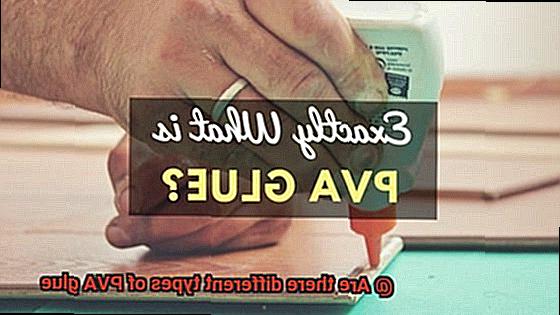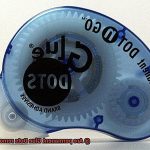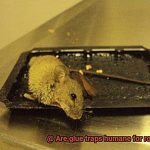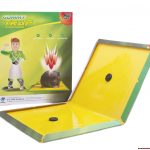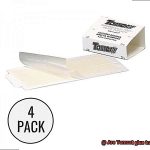Picture this: you’re knee-deep in a creative project, desperately searching for an adhesive that can withstand your artistic prowess. Enter PVA glue, the unsung hero of sticky situations. But here’s the kicker – not all PVA glues are cut from the same cloth.
Polyvinyl Acetate (PVA) glue may seem like a run-of-the-mill adhesive, but let me tell you, it’s anything but ordinary. In fact, there’s a whole world of different types out there, each tailored to specific needs and boasting its own set of unique qualities. So buckle up and prepare to embark on an exhilarating journey through the realm of PVA glue.
Whether you’re a crafting connoisseur or just someone looking to fix odds and ends around the house, this blog post is your ultimate guide to understanding the various types of PVA glue. We’ll delve into their specific uses, uncover their hidden benefits, and help you find your perfect adhesive match for any creative venture.
So get ready to explore this captivating world with me as we dive headfirst into the enchanting realm of PVA glue. First up on our adventure? The ever-reliable Regular PVA glue.
What is PVA Glue?
Contents
- 1 What is PVA Glue?
- 2 Types of PVA Glue Based on Drying Time
- 3 Water-Resistant Properties of PVA Glue
- 4 Specialized PVA Glues for Specific Materials and Applications
- 5 Considerations When Choosing the Right PVA Glue
- 6 Shelf Life, Ease of Use, and Cleanup
- 7 Different Brands and Manufacturers of PVA Glue
- 8 Conclusion
When it comes to adhesives, there’s one name that stands out: PVA glue. But what exactly is PVA glue and why is it so popular? Let’s dive into the captivating world of PVA glue and explore its various uses and importance.
PVA glue, or polyvinyl acetate glue, is a synthetic polymer adhesive that is water-based. Its ability to dissolve in water and dry clear makes it incredibly versatile for a wide range of applications. Whether you’re crafting, woodworking, or tackling household repairs, PVA glue is the go-to adhesive.
One of the key advantages of PVA glue is its strong bonding properties, especially between porous materials like wood, paper, fabric, and cardboard. From building wooden masterpieces to creating intricate paper crafts, PVA glue provides a reliable bond that stands the test of time.
But wait, there’s more. PVA glue can also be used on non-porous surfaces like metal and plastic, making it a handy tool for quick fixes and minor repairs around the house. While its bonding strength may not match specialized adhesives for these surfaces, PVA glue gets the job done.
PVA glue comes in various forms to cater to different needs. The liquid form is the most common and can be easily applied using a brush or spreader. It dries relatively quickly within 15 to 30 minutes, depending on the thickness and environment.
For precision and thicker consistency, gel and solid stick forms of PVA glue are available. These are perfect for detailed crafts or projects that require more control over the adhesive application.
What sets PVA glue apart from other adhesives is its user-friendly nature. It is non-toxic and safe to use, making it suitable for children’s crafts. Plus, PVA glue has low odor, making it more pleasant to work with than other adhesives.
Cleanup is a breeze with PVA glue. It is water-soluble when wet, allowing for easy cleanup with just soap and water. No more struggling with harsh chemicals or sticky residue.
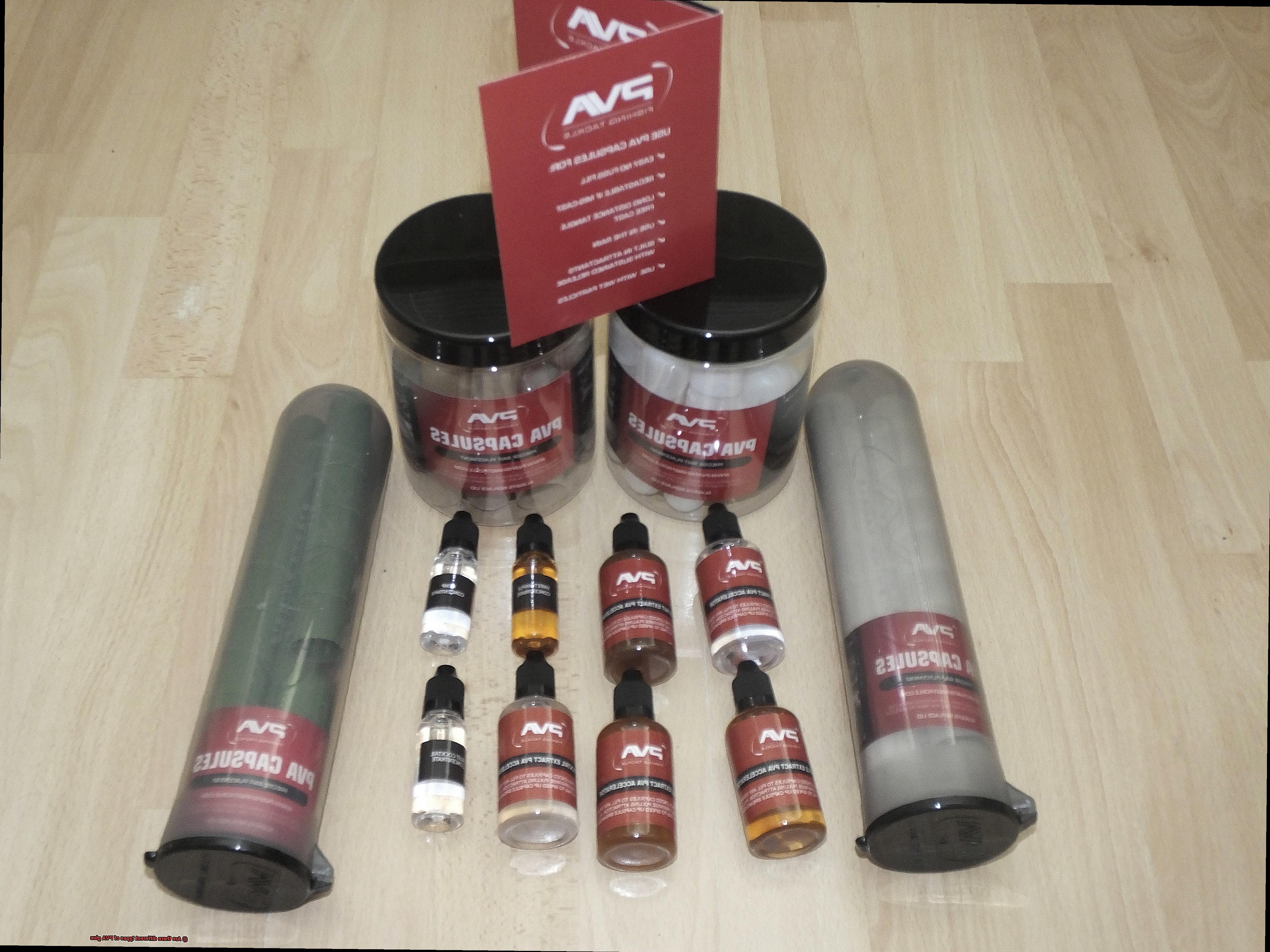
It’s important to note that not all PVA glues are the same. There are variations in formulations that cater to specific needs or applications. For outdoor projects or areas exposed to moisture, water-resistant PVA glues are available. These are commonly used for woodworking projects like outdoor furniture.
If you’re into arts and crafts, there’s a specialized PVA glue just for you. “School glue” or “craft glue” varieties have a slightly higher viscosity and longer drying time, allowing for repositioning of glued items before the adhesive sets. They even come in colored versions to add an extra touch of creativity to your projects.
Types of PVA Glue Based on Drying Time
If so, you’ve likely come across PVA glue, the trusty adhesive used for a wide range of projects. But did you know that not all PVA glues are created equal when it comes to drying time? In this article, we’ll delve into the fascinating world of PVA glue and explore the different types available based on their drying time.
Fast-Drying PVA Glue (15-30 minutes):
If you’re a fan of instant gratification or need a quick fix, fast-drying PVA glue is your go-to option. This type of glue is designed to dry within 15 to 30 minutes, making it perfect for those last-minute paper crafts or small repairs. It’s like having a superhero sidekick that swoops in and saves the day in no time. Fast-drying PVA glues are especially effective on porous materials like wood, quickly penetrating and forming a strong bond.
Medium-Drying PVA Glue (1-2 hours):
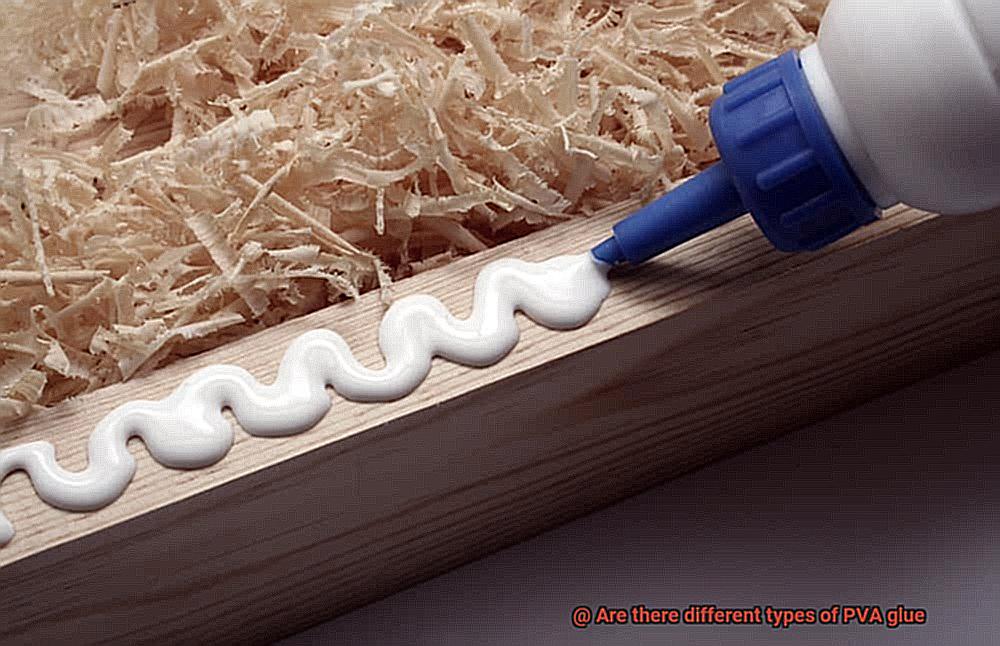
Looking for a glue that strikes the perfect balance between speed and working time? Medium-drying PVA glue is here to save the day. Taking approximately 1 to 2 hours to fully dry, it offers you ample time to work on your crafting or woodworking projects without feeling rushed. This glue is reliable, providing excellent bonding strength even on non-porous materials such as plastic or metal. It’s like having a loyal companion by your side, supporting you throughout your creative journey.
Slow-Drying PVA Glue (24 hours or more):
For those intricate woodworking projects that demand precision and patience, slow-drying PVA glue is your secret weapon. This glue takes its sweet time to set, often requiring 24 hours or more before fully drying. It’s like a wise old mentor, guiding you through the process and allowing for adjustments before it solidifies completely. Slow-drying PVA glues are perfect for large surfaces or projects where alignment and positioning are paramount. It’s the glue that whispers, “Take your time, my friend.”
Factors Affecting Drying Time:
Remember, the drying time of PVA glue can be influenced by various factors such as temperature, humidity, and the thickness of the glue layer applied. Warmer temperatures and lower humidity levels generally result in faster drying times. So, be mindful of your surroundings and adjust your expectations accordingly. Always follow the manufacturer’s instructions and consider these factors when embarking on your creative endeavors.
Water-Resistant Properties of PVA Glue
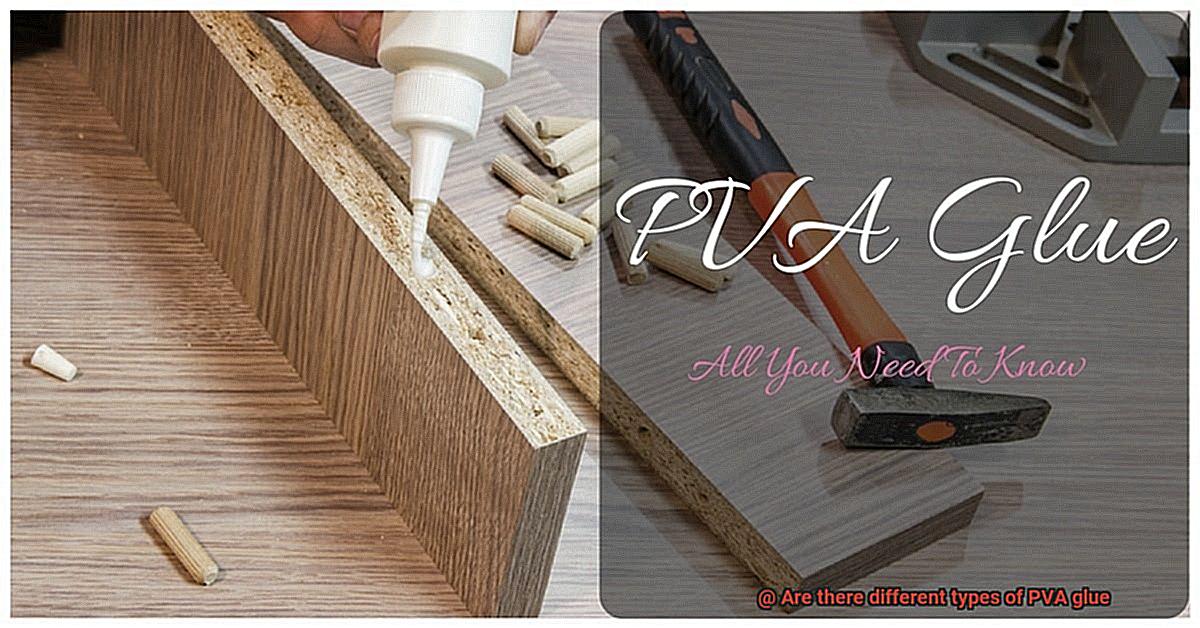
Today, we will be delving into the water-resistant properties of PVA glue and uncovering the secrets that lie within. So, put on your goggles and prepare to dive deep into this topic.
Understanding Water Resistance in PVA Glue:
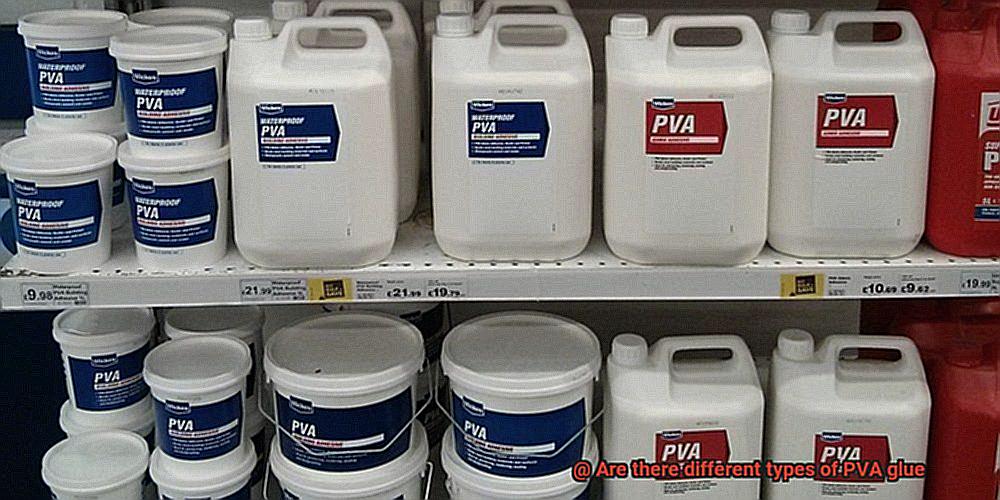
Polyvinyl Acetate glue, more commonly known as PVA glue, is renowned for its water-resistant capabilities. While regular PVA glue may not be completely waterproof, there are specialized variations available that have been formulated with additives to enhance their water resistance.
Variations in Water Resistance:
Not all water-resistant PVA glues are created equal. The level of water resistance can vary depending on the brand and formulation. Some water-resistant PVA glues offer exceptional durability even when exposed to water for extended periods. These glues are ideal for outdoor woodworking projects or bonding materials in humid environments.
Proper Application:
To unlock the full potential of water-resistant PVA glue, it is crucial to follow the manufacturer’s instructions regarding application and drying time. By doing so, you ensure that the adhesive has enough time to bond and create a protective barrier against water infiltration.
Limitations of Water-Resistant PVA Glue:
Though water-resistant PVA glue provides improved resistance compared to regular PVA glue, it does have its limitations. It may not be suitable for fully submerging items or prolonged exposure to water. For applications requiring complete waterproofing, epoxy or polyurethane adhesives are recommended.
Choosing the Right Glue:
When selecting a water-resistant PVA glue, it is essential to check the product label or specifications to ensure it meets your desired level of water resistance for the intended application.
Specialized PVA Glues for Specific Materials and Applications
When it comes to glue, one size does not fit all. That’s where specialized PVA glues come in, offering tailored solutions for specific materials and applications. From woodworking to bookbinding, fabric projects to heavy-duty construction, unlocking the secrets of superior bonding requires choosing the right glue for your project. In this article, we will explore how specialized PVA glues enhance adhesion, durability, and aesthetics across various materials and applications.

Wood Glue:
Woodworking projects demand a glue that can withstand the stresses and strains unique to the craft. Enter wood glue, engineered to provide a strong adhesive strength that endures. Its durable bond ensures long-lasting results, while its clear drying formula enhances the natural beauty of wood. Remember, though, wood glue is not suitable for bonding plastics or metals.
Fabric Glue:
Forget needles and thread; fabric glue revolutionizes sewing and crafting projects. This adhesive allows you to bond fabric surfaces together without traditional sewing methods. Its flexibility when dry ensures easy movement and stretching of the fabric without compromising the bond. From clothing alterations to DIY home decor, fabric glue is a versatile essential.
Bookbinding Glue:
For book lovers turned creators, bookbinding glue is a must-have tool. With its high viscosity, this specialized PVA glue creates a strong bond between paper surfaces, ensuring your handmade books or paper projects stand the test of time. Its clear drying formula brings a professional finish to your creations, elevating their overall appearance.
Construction and Carpentry Glues:
For heavy-duty applications like woodworking, carpentry, or construction projects, specialized PVA glues formulated for these purposes offer unmatched strength and durability. These glues can handle heavy loads and harsh environments with ease, providing a secure bond that stands up to constant use and exposure to moisture or temperature fluctuations.
Special Considerations:
To achieve optimal results, it’s crucial to select the right type of PVA glue for your project. Reading product labels and consulting experts or professionals in the field can help you make the appropriate choice. Keep in mind that while PVA glues are versatile, they may not be suitable for bonding plastics or metals. In such cases, alternative adhesives like epoxy or cyanoacrylate (super glue) are recommended.
Considerations When Choosing the Right PVA Glue
Choosing the right PVA glue for your project can make all the difference in achieving a successful and long-lasting bond. With so many options available, it’s important to consider a few key factors to ensure you’re selecting the best glue for your specific needs.
First and foremost, consider the intended use of the glue. Different types of PVA glue offer varying levels of strength, flexibility, and drying time. For example, if you’re working on a heavy-duty construction project, you’ll want to opt for a PVA glue that offers a strong bond. On the other hand, if you’re working on lightweight crafts or paper-based projects, a more flexible and lightweight glue will suffice.
Drying time is another crucial consideration. Some PVA glues dry quickly, which can be advantageous for projects that require speedy completion. On the other hand, there are PVA glues that take longer to dry, providing more working time for complex projects or when adjustments need to be made.
When choosing a PVA glue, it’s also important to consider its versatility. Some glues can be used on a wide range of materials, including wood, fabric, paper, and plastic, while others may have limitations in terms of compatibility. If you’re working on multiple materials, opt for a versatile PVA glue that can handle them all.
Water resistance is another factor worth considering. While most PVA glues are water-soluble when wet, some formulations offer increased water resistance when dry. This can be beneficial for projects that may come into contact with moisture or require occasional cleaning.
Additionally, take note of any additional features or specific instructions provided by the manufacturer. Some PVA glues may have added properties like non-toxicity, odorlessness, or UV resistance, making them suitable for specialized uses.
Lastly, don’t forget to read reviews or seek recommendations from experienced users. Hearing about others’ experiences can help you make an informed decision and ensure the best selection for your project.
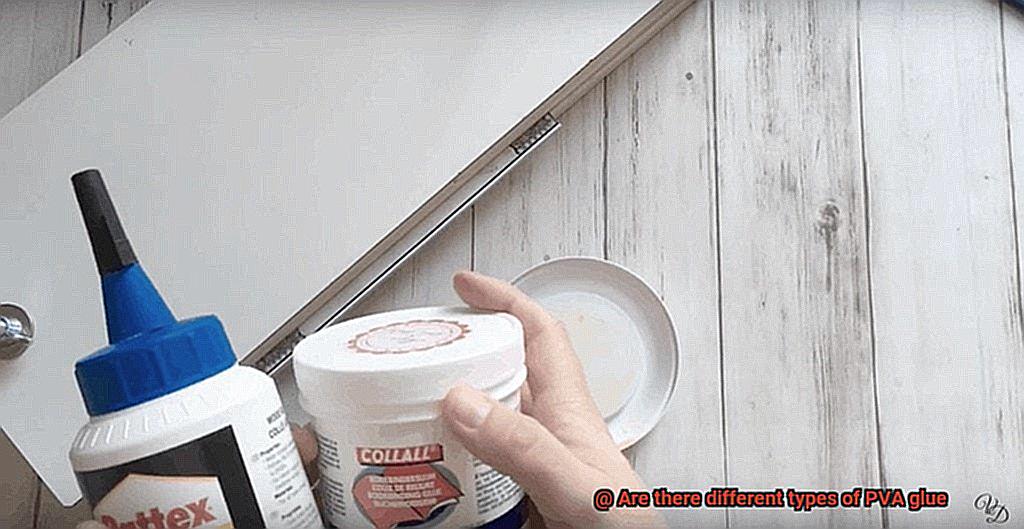
Shelf Life, Ease of Use, and Cleanup
When it comes to crafting, woodworking, or any DIY project, having the right glue is essential. And one type of adhesive that stands out for its shelf life, ease of use, and cleanup is PVA glue. So, let’s dive into the details and discover why PVA glue is a must-have in your toolbox.
Let’s start with the shelf life of PVA glue. The good news is that if stored properly, this glue can last for several years without losing its adhesive properties. That means you can stock up on PVA glue and have it ready whenever inspiration strikes. Just remember to keep the container tightly sealed when not in use to prevent it from drying out. And store it in a cool, dry place away from direct sunlight or heat sources to ensure its longevity.
Now, let’s move on to the ease of use of PVA glue. One of its standout features is its water-based formula. This means it’s incredibly easy to apply and work with. No more struggling with thick, gooey glues. Plus, PVA glue doesn’t have a strong odor, making your crafting experience much more pleasant. And its relatively low viscosity allows for easy control and precise application on a variety of materials. Whether you’re working with paper, wood, fabric, or even some plastics, PVA glue will get the job done. And the best part? It dries relatively quickly, usually within 15-30 minutes. So you can keep your projects moving without any long waiting periods.
But what about cleanup? Well, here’s the exciting part – PVA glue is a breeze to clean up. Since it’s water-based, simply wipe away any excess glue with a damp cloth or sponge while it’s still wet. No need to worry about sticky messes. And if the glue has already dried, don’t panic. It forms a transparent film that can be peeled or scraped off from hard surfaces. It’s like magic. And for any stubborn remnants, soaking in warm water or using mild solvents like vinegar can do the trick.
However, it’s important to note that PVA glue may not be suitable for all applications where waterproof or heat-resistant properties are required. For those specific projects, alternative types of glue may be more appropriate. So, always consider the requirements of your project before reaching for the PVA glue.
Different Brands and Manufacturers of PVA Glue
Polyvinyl acetate (PVA) glue is a versatile adhesive that is widely used in crafts, woodworking, and various other projects. There are numerous brands and manufacturers that offer PVA glues, each with its own unique features and qualities. Let’s explore some of the top brands in the market.
Elmer’s, with over 70 years of experience, is considered the original and most well-known brand of PVA glue. Their range of PVA glues includes the classic white glue, school glue, and clear glue. Elmer’s glues are loved for their strong bond, quick drying time, and non-toxic formula. Crafters and DIY enthusiasts trust Elmer’s for its quality and reliability.
Aleene’s is another popular brand in the world of crafting adhesives. They offer a variety of PVA glues, such as their original tacky glue and fast grab tacky glue. Aleene’s glues are known for their versatility, durability, and effective bonding of different materials. Whether you’re working on paper crafts or heavy-duty projects, Aleene’s has got you covered.
If you’re a woodworking enthusiast, Titebond is the go-to brand for PVA glues. Titebond specializes in woodworking adhesives and offers a range of PVA glues designed specifically for woodworking applications. Their glues provide superior strength and bonding properties, ensuring a reliable hold for your woodworking projects.
For those seeking extra strength, Gorilla Glue is the answer. Known for their strong adhesives, Gorilla Glue also offers a PVA glue option. Gorilla Wood Glue is a water-based adhesive that provides a strong bond for woodworking projects. It dries quickly and is resistant to moisture, making it perfect for high-stress situations.
In addition to these brands, there are other notable manufacturers of PVA glue as well. Beacon Adhesives, Surebonder, and Sargent Art all offer their own range of PVA glues with different features and qualities. It’s always worth reading reviews and comparing different brands to find the perfect fit for your project.
When choosing a brand or manufacturer of PVA glue, consider factors such as the intended use, materials being bonded, drying time, safety considerations, and personal preferences. Test different brands and types of PVA glue to determine which one works best for your individual needs.
H2h_DlvWwjw” >
Conclusion
Yes, there are indeed different types of PVA glue available in the market.
These variations cater to specific needs and applications, providing users with options that suit their unique requirements. Whether you’re a crafts enthusiast working on delicate projects or a professional carpenter in need of a strong adhesive for heavy-duty tasks, there is a PVA glue designed just for you.
From clear-drying formulas to waterproof variants, these different types of PVA glue offer versatility and reliability.

